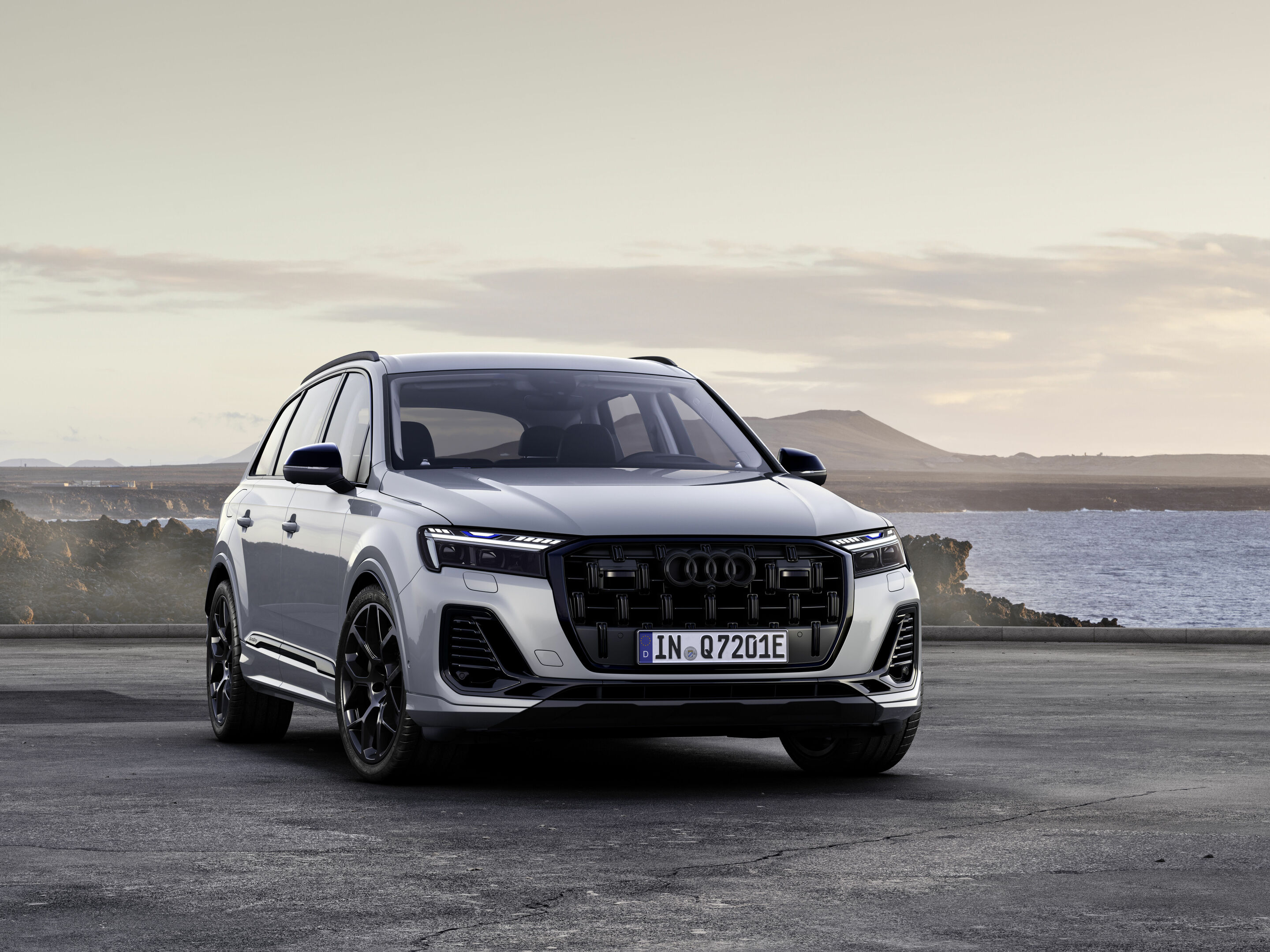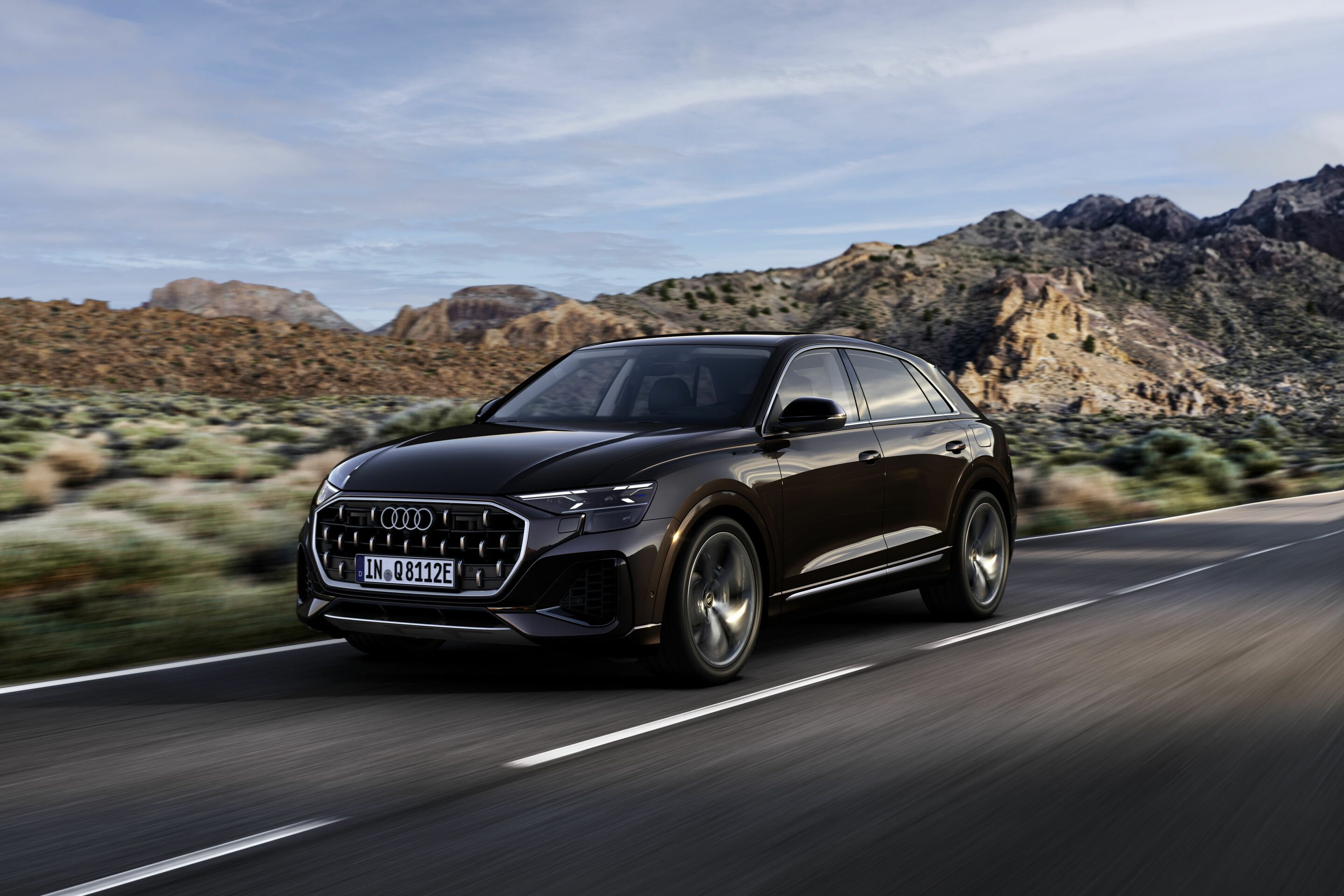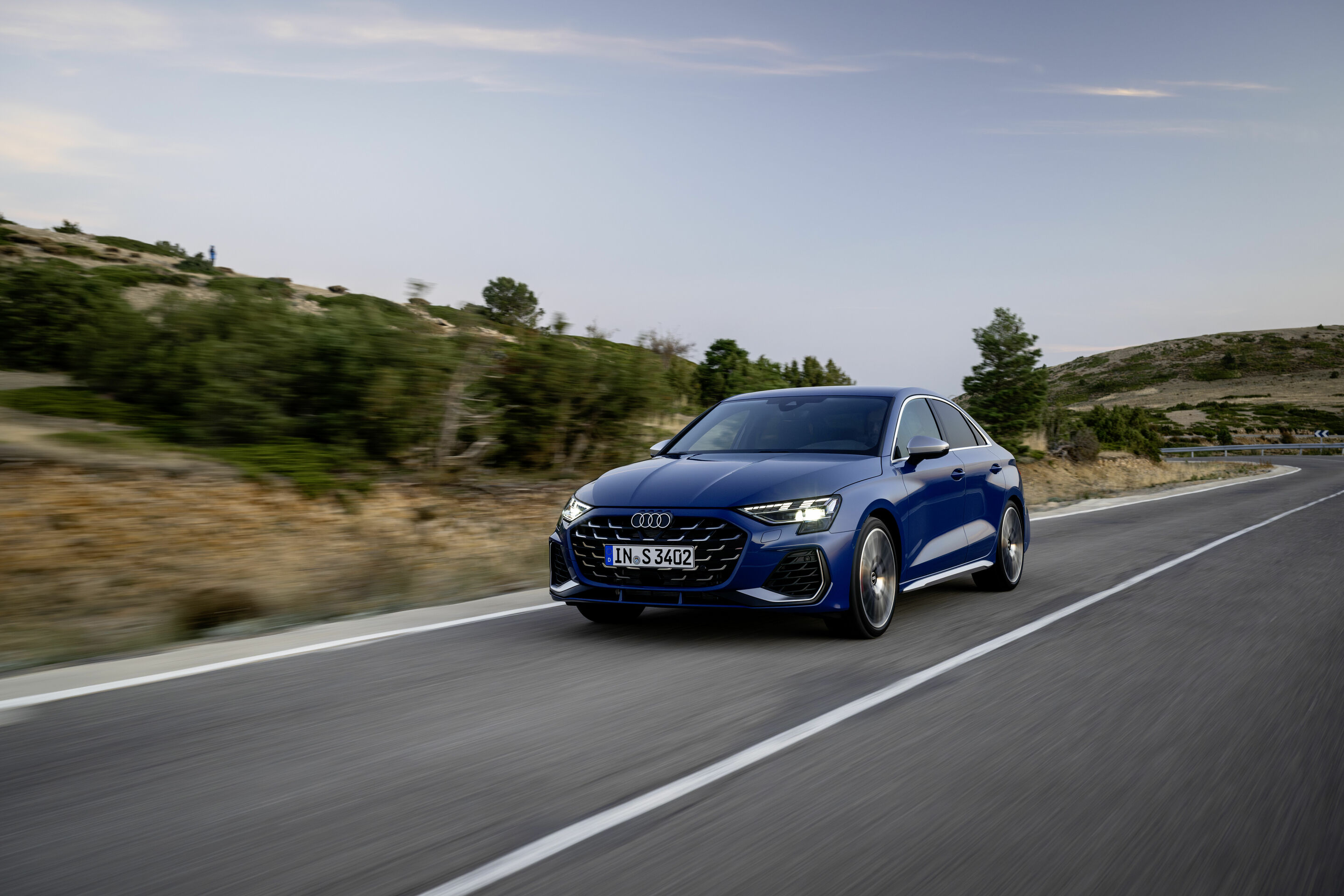Search
All results
(186)
MediaInfos
(62)
BasicInfos
(3)
Press kits
(3)
Images
(17)
Videos
(8)
Publications
(4)

The R8 was Audi’s first super sports car and the result of a cooperation with subsidiary Lamborghini A total of 45,949 units have left the Neckarsulm and Böllinger Höfe plants since 2007 The final particular model is a pinnacle: the R8 V10 GT RWD with rear-wheel drive
A super sports car legend takes its leave: In its 17 years, the Audi R8 has captured hearts and celebrated just as many successes. After 45,949 units produced, the final R8 rolled off the line at Böllinger Höfe in March 2024. A look back at an unparalleled success story.
Breathtaking design, a tantalizing engine sound, and driving dynamics like no other road-legal Audi ever offered: When it was unveiled in 2006, the R8 was a revolution – in Germany and around the world. A mid-engine super sports car; never before had Audi offered such a vehicle. With the R8, Audi moved into more exclusive segments previously dominated by brands such as Ferrari, Porsche, and Lamborghini. The Audi R8 was developed and built by the former quattro GmbH (today: Audi Sport GmbH). It immediately became the sporty icon in the company’s product portfolio and continues to contribute to the exclusive image of the Audi brand to this day. The R8 name refers to a successful race car that brought Audi more wins at Le Mans than any other manufacturer in history: In 1999, Audi launched its legendary Le Mans program with a sports prototype that started in the LMP900 class. The first name of this racing prototype was R8. It won at the 24 Hours of Le Mans in 2000, 2001, 2002, 2004, and 2005, making it the Le Mans sports car with the most victories in modern history. The prototype claimed more victories at the 12 Hours of Sebring, a race in the USA, which it won every year from 2000 to 2005. With these victories, Audi increased its prestige in international racing and laid the foundation for the road-legal R8 super sports car.

Drivers can feel the increased driving dynamics and the high-quality materials, which exude the highest quality and make the Audi RS 3 an experience for the senses.
SEEING: sporty, striking design visually evokes performance After its product upgrade, the Audi RS 3 has a significantly sportier appearance. The dominant feature of the assertive front design is the hexagonal Singleframe with a striking border. Flatter and considerably broader than before, it emphasizes the dynamics of the compact sports car with its voluminous rhombus-pattern grille. The same goes for the two functional side air intakes – accentuated by vertical black blades – and the three apertures above the front splitter, which now spans the entire vehicle breadth and lets the RS 3 sit even lower – reminiscent of the Audi Sport quattro S1 Pikes Peak from 1987. With redesigned daytime running lights, the headlights also accentuate the car’s performance.

With 471 kW (640 PS) and 850 Nm of torque, the new RS Q8 performance takes the top position among models from Audi Sport GmbH An expressive exterior and new, lighter* wheels significantly sharpen the appearance of Audi’s most powerful SUV yet again With a time of 7:36.698 minutes, the RS Q8 performance sets a new best time for production SUVs on the legendary Nürburgring Nordschleife circuit Audi Sport boss Rolf Michl: "The RS Q8 performance owes its lap record to the interplay of the V8 engine and chassis components as well as the passion of the Audi Sport GmbH team for absolute performance."
Audi is rounding out the Audi Q8 model range, not only with the new RS Q8 with an output of 441 kW (600 PS) but is adding a new, second version to the top model in the series: the RS Q8 performance . Its increased output of 471 kW (640 PS) makes the SUV the most powerful series-produced combustion model in the history of Audi Sport GmbH. Both vehicles boast outstanding driving dynamics thanks to an optimized, self-locking center differential while guaranteeing an equally impressive suitability for everyday use.
 Maximum efficiency in ample space: the new Audi Q7 TFSI e quattro and Q8 TFSI e quattro
Maximum efficiency in ample space: the new Audi Q7 TFSI e quattro and Q8 TFSI e quattro
Operating as a generator, the electric motor performs all light to moderate braking up to 0.3 g, corresponding to more than 90 percent of all deceleration events in everyday driving. The hydraulic wheel brakes only need to be used for heavy braking. The hybrid SUVs achieve up to 80 kW of recuperation power during braking. When the optional adaptive cruise assist with radar cruise control is active, the PEA helps with deceleration and fuel-saving acceleration. If turned off, the Audi virtual cockpit or optional head-up display indicates to the driver when they should take their foot off the right pedal. Detail icons such as intersections, city signs, or vehicles ahead illustrate the reason for the reduction in speed. Optimized equipment range to meet every need High-intensity LED headlights light up the road as standard; Matrix LED headlights are available as an option. Innovative HD Matrix LED headlights with Audi laser light as an additional high beam for a significantly increased beam range are available as a further option. New for the top-of-the-range headlights are digital daytime running light signatures. They give the partially electric Q7 and Q8 a characteristic and unmistakable appearance, allowing the user to select one of four individual light signatures via the MMI. For the first time, the vehicles also come optionally with largely digitalized OLED rear lights, which also have digital light signatures. Moreover, the digital OLED rear lights feature proximity indication in conjunction with the assistance systems. Like the product upgrade for the base versions, the electrified Q7 and Q8 have a significantly upgraded equipment range. In addition to contrasting colors for the seat stitching, customers can choose from nine decorative inlays and three new finishes. The wheel range includes five new designs for sizes ranging from 21” to 23” (depending on the model).
 Maximum efficiency in ample space: the new Audi Q7 TFSI e quattro and Q8 TFSI e quattro
Maximum efficiency in ample space: the new Audi Q7 TFSI e quattro and Q8 TFSI e quattro
Operating as a generator, the electric motor performs all light to moderate braking up to 0.3 g, corresponding to more than 90 percent of all deceleration events in everyday driving. The hydraulic wheel brakes only need to be used for heavy braking. The hybrid SUVs achieve up to 80 kW of recuperation power during braking. When the optional adaptive cruise assist with radar cruise control is active, the PEA helps with deceleration and fuel-saving acceleration. If turned off, the Audi virtual cockpit or optional head-up display indicates to the driver when they should take their foot off the right pedal. Detail icons such as intersections, city signs, or vehicles ahead illustrate the reason for the reduction in speed. Optimized equipment range to meet every need High-intensity LED headlights light up the road as standard; Matrix LED headlights are available as an option. Innovative HD Matrix LED headlights with Audi laser light as an additional high beam for a significantly increased beam range are available as a further option. New for the top-of-the-range headlights are digital daytime running light signatures. They give the partially electric Q7 and Q8 a characteristic and unmistakable appearance, allowing the user to select one of four individual light signatures via the MMI. For the first time, the vehicles also come optionally with largely digitalized OLED rear lights, which also have digital light signatures. Moreover, the digital OLED rear lights feature proximity indication in conjunction with the assistance systems. Like the product upgrade for the base versions, the electrified Q7 and Q8 have a significantly upgraded equipment range. In addition to contrasting colors for the seat stitching, customers can choose from nine decorative inlays and three new finishes. The wheel range includes five new designs for sizes ranging from 21” to 23” (depending on the model).

Increased performance with 333 PS of power and 420 Nm of torque Torque splitter and dynamic plus mode for agile handling Expressive design and selectable daytime running light signatures
With a host of new features, the Audi S3 is more than just a product upgrade: Increased output, a torque splitter, and other technology highlights ensure strong performance and agile handling. Visually, the compact model reflects its increased dynamics with an expressive front design, a sporty diffuser, and a four-pipe performance exhaust system. The Audi S3 will be available at dealerships as a Sportback and as a sedan in the second quarter of 2024. Price: from 55,600 euro.
More performance: 2.0 TFSI with 333 PS With 245 kW (333 PS) and 420 Nm of torque, the S3 is more powerful than ever. As part of the product upgrade, the 2.0 TFSI receives an increase in output of 23 PS and 20 Nm more torque. The result is confident pulling power and strong acceleration. The S3 accelerates from 0 to 100 km/h (62 mph) in 4.7 seconds. Maximum torque is available in a wide rev range between 2,100 and 5,500 rpm. Top speed is limited to 250 km/h (155 mph). The engine and transmission also receive a sportier tuning: When at a steady speed and at low to medium acceleration in the part-load range, the preloaded turbocharger keeps at a constant rpm.
 Sharpened favorite: upgrade for the Audi A3
Sharpened favorite: upgrade for the Audi A3
Sporty exterior and up to four different daytime running light signatures selectable New design elements and materials for the interior and extended standard equipment Integrated Audi store for apps and functions on demand for a personalized, digital experience
The Audi A3 heads into the 2025 model year with a sportier look, new design elements, and digital features. In addition to selectable daytime running light signatures, the ability to flexibly purchase vehicle functions any time ensures a high degree of personalization. In addition, the standard equipment has been significantly expanded and new materials have been used for enhanced comfort.
Sportier than ever: the exterior More dynamic – more progressive – more emotional: This is how the A3 Sportback and Sedan present themselves following the model upgrade. The hexagonal, frameless Singleframe features a new structure that is noticeably flatter and wider. It dominates the front end and, in addition to the large angular side air intakes, clearly symbolizes the compact models’ sporty character. The striking front spoiler connects the two and makes the Audi A3 appear lower. The same is true of the rear, which is sportier than ever with a new bumper and distinctive diffuser. The progressive design elements are particularly effective with the S line exterior, as they are partly inspired by the RS models.The expressive exterior colors District Green, Ascari Blue, and Progressive Red further strengthen the sporty look. Selectable: up to four different daytime running light signatures Like the redesigned Singleframe, the lighting design is significantly thinner, emphasizing the width of the Audi A3 series. The 24-pixel elements that make up the digital daytime running lights in the LED and Matrix LED headlights are now arranged in three rows on the upper edge of the housing.
 In top form: the Audi A3 and new A3 allstreet
In top form: the Audi A3 and new A3 allstreet
A sportier design, selectable daytime running light signatures, extended standard equipment, and new materials The crossover A3 allstreet offers an SUV-like driving experience thanks to higher ground clearance and a distinctive off‑road look Integrated Audi store for apps and functions on demand ensure a personalized digital experience
An extensive upgrade for a successful model: The car with which Audi established the premium compact class in 1996, the A3, is sportier, more comfortable, and more digital than ever, thanks to its more progressive design, significantly extended standard equipment, and new materials and offers. Apps that can be used directly in the vehicle display, selectable daytime running light signatures, and the ability to add vehicle functions on demand any time enable a high degree of customization. The A3 allstreet, the distinctive crossover of the A3 family, is new to the market. With its characteristic off-road look, three centimeters of extra ground clearance compared to the A3 Sportback, and a raised seat position, the vehicle offers an SUV like driving experience combined with high functionality.
Sportier than ever: the exterior of the Audi A3 More dynamic – more progressive – more emotional: This is the character of the A3 Sportback and Sedan models after the model upgrade. The hexagonal, frameless Singleframe features a new structure and is noticeably flatter and wider. It dominates the front end and, in addition to the large angular side air intakes, clearly symbolizes the compact models’ sporty character. The striking front spoiler connects the two intakes and makes the Audi A3 appear lower. The same is true of the rear, which is particularly sporty with its new bumper and distinctive diffuser. Partly inspired by the RS models, the progressive design elements are particularly effective when combined with the S line exterior.